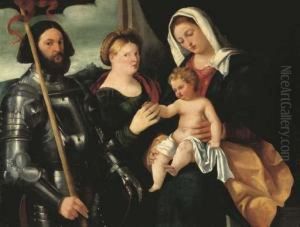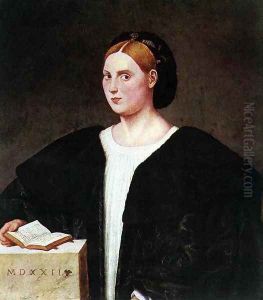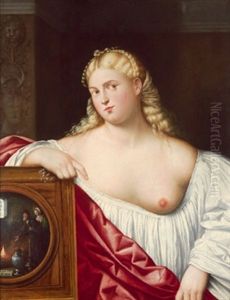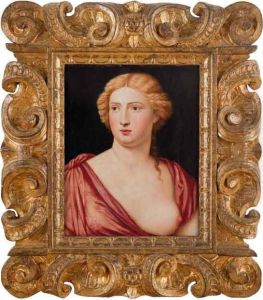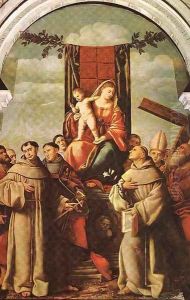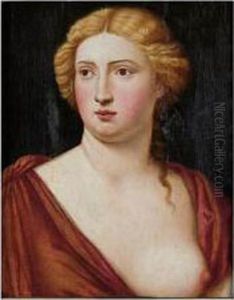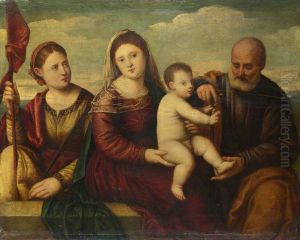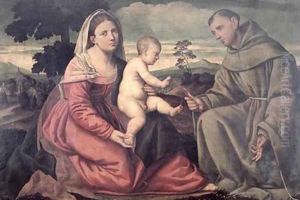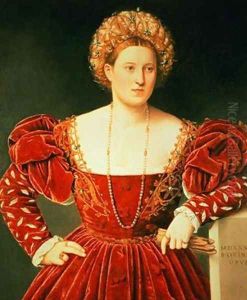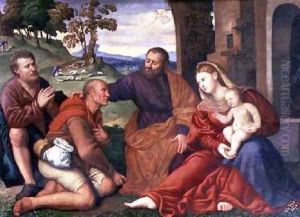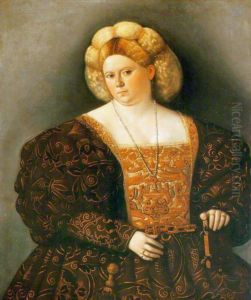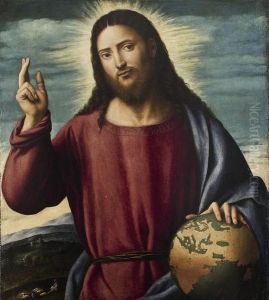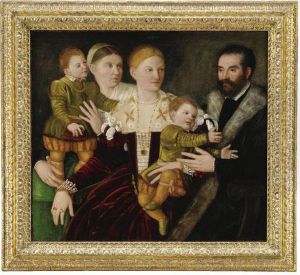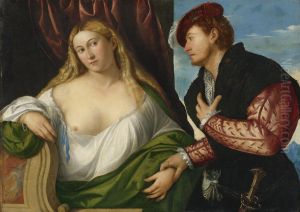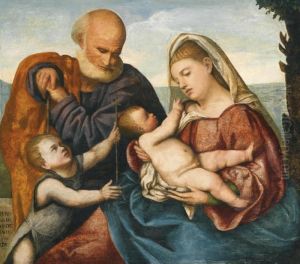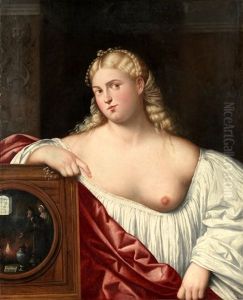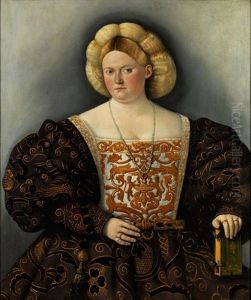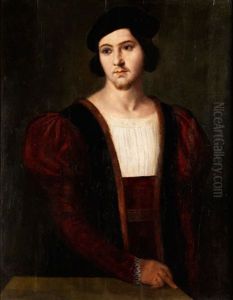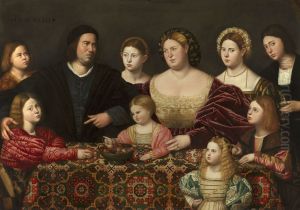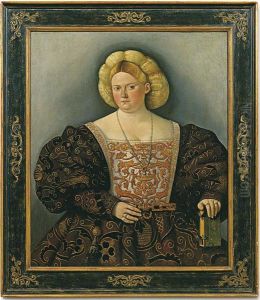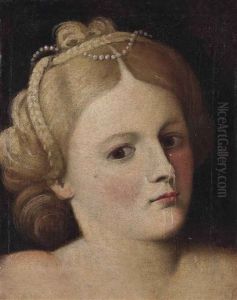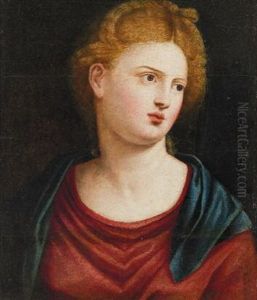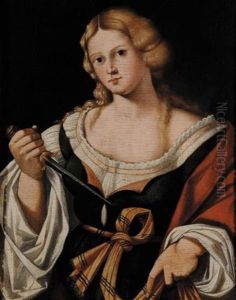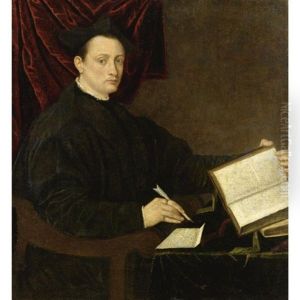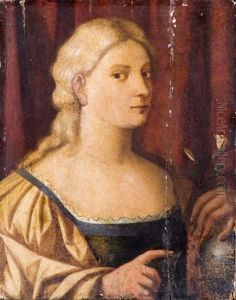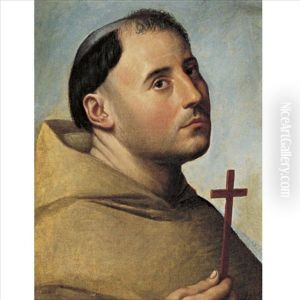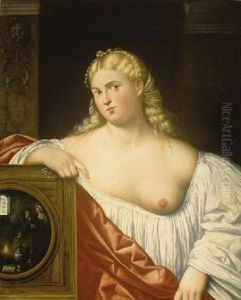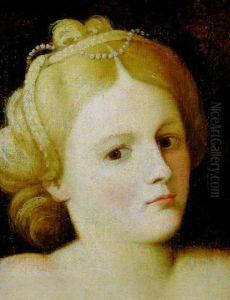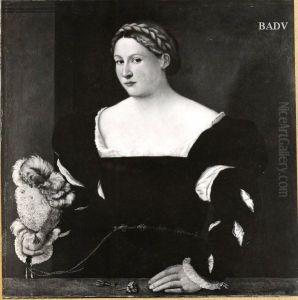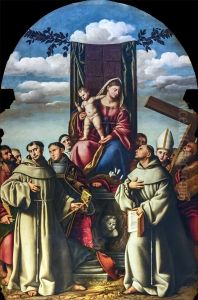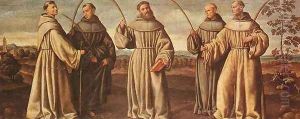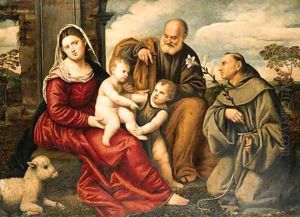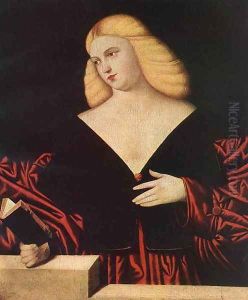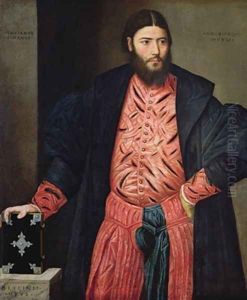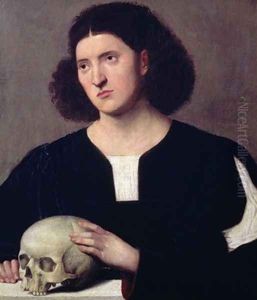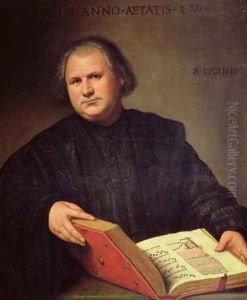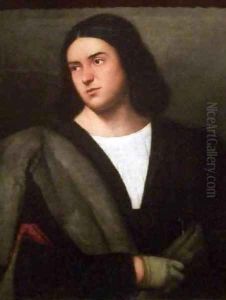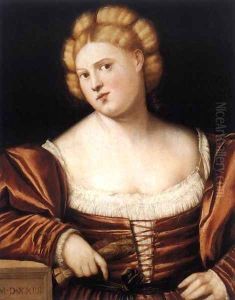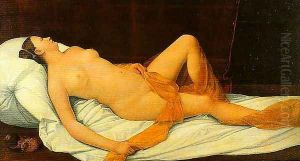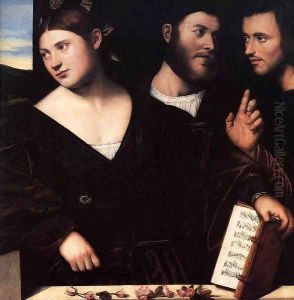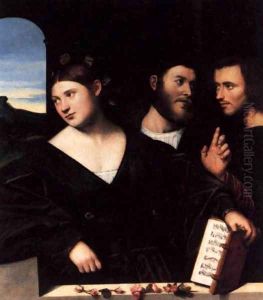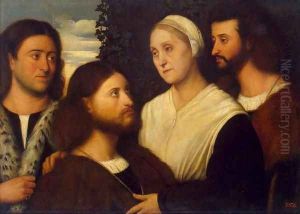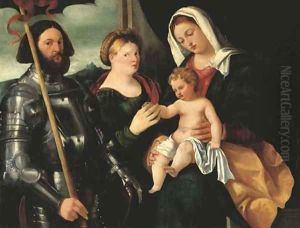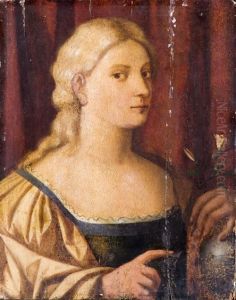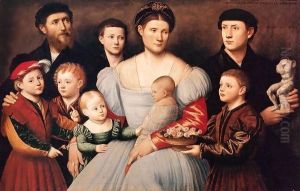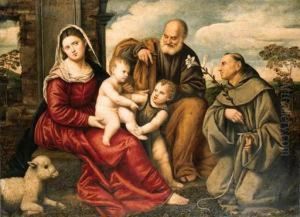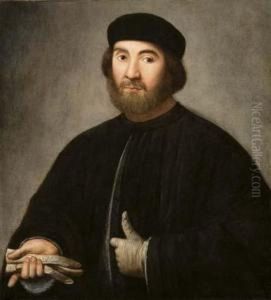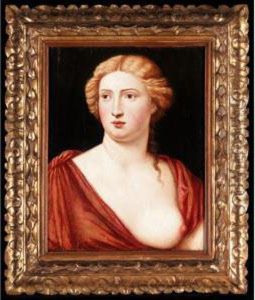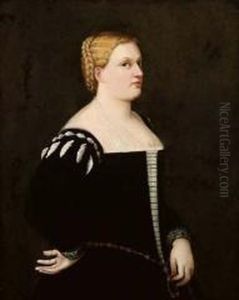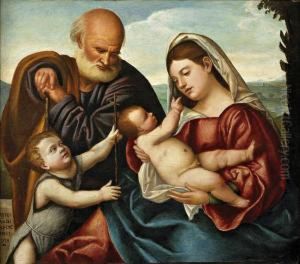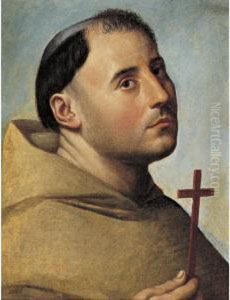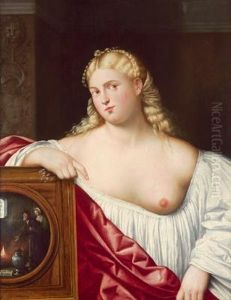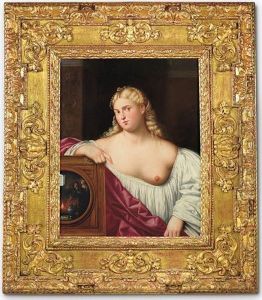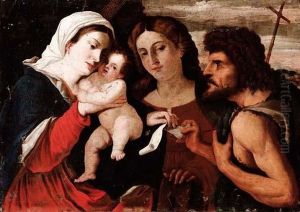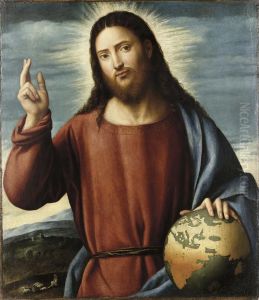Bernardino Licinio Paintings
Bernardino Licinio was an Italian painter of the Venetian Renaissance period, active mainly in Venice and the Venetian mainland. His exact date of birth is not known, but it is believed to be around 1489. Licinio came from a family of painters, with his brother Arrigo and his sons all being painters as well. However, Bernardino was the most notable among them.
Licinio’s work reflects the transition from the early Renaissance to the High Renaissance. He is known for his portraits, religious compositions, and mythological subjects, often characterized by strong, rich colors and a robust approach to figure painting. His style was influenced by the works of Giovanni Bellini and the early works of Titian, with whom he is sometimes confused due to the stylistic similarities.
While Licinio’s early life and training are not well documented, he is believed to have been active in Venice by 1510. He developed a reputation for his portraits, which were notable for their realistic depiction of the subjects, capturing their individual character with psychological depth. His religious works also displayed his ability to portray human emotion and incorporate dramatic lighting effects, which became a hallmark of the Venetian school.
Licinio's works can be found in many of the leading European museums, including the Louvre in Paris and the National Gallery in London. Despite being less well-known than some of his contemporaries, Bernardino Licinio has been recognized for his contribution to the development of Venetian painting during a period that was marked by significant artistic achievements. He is believed to have died around 1565, leaving behind a body of work that continues to be studied and appreciated by art historians and enthusiasts.
